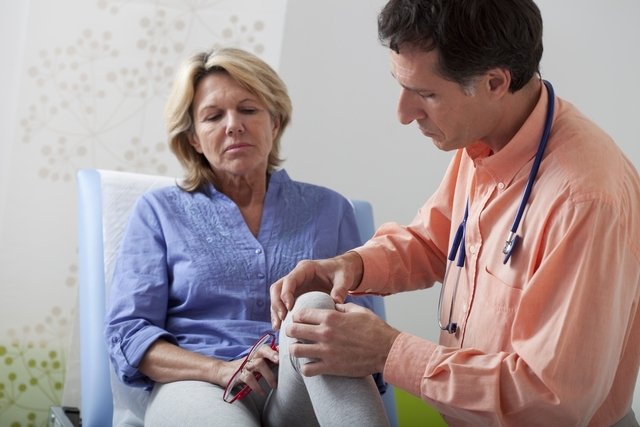The symptoms of gout are caused by inflammation of the affected joint and include pain, redness, heat and swelling, which may appear in the toes or fingers, ankle, knee or elbow, for example.
Although symptoms disappear within a few days, gout treatment may be indicated and may involve medications such as analgesics and corticosteroids. Furthermore, when not treated properly and uric acid levels remain high, pain attacks can recur and gout can cause deformities and nodules in the joints. Check out how to identify and treat high uric acid.
Therefore, if you suspect gout, it is important to consult a general practitioner or rheumatologist for an evaluation, start appropriate treatment and prevent the disease from progressing.

Main symptoms
The main symptoms of gout are:
- Pain in the joint, which appears suddenly;
- Redness at the site of pain;
- Swelling in the affected region;
- Worsening pain when touched in the region;
- Heat at the site of pain;
- Fever and malaise;
- Nodules on the skin of affected joints;
- Joint deformities;
- Difficulty moving the joint involved.
Pain in a gout attack can involve one or more joints in the body, usually affecting the toes, ankles or knees, and tends to occur at night or in the morning. Furthermore, although it is not normally relieved by analgesics, such as paracetamol or dipyrone, the pain usually regresses within 3 to 14 days even without treatment.
If gout is suspected, it is important to consult a general practitioner or rheumatologist for an evaluation and start appropriate treatment, because, when left untreated, gout can cause new attacks of pain and lead to deformities and nodules in the joints over time.
How to confirm the diagnosis
The diagnosis is usually confirmed by the general practitioner or rheumatologist taking into account the symptoms present, however, in some cases the analysis of synovial fluid, which is the fluid inside the joint, may be indicated, as it allows the identification of the crystals that cause inflammation.
In addition, other tests such as ultrasound, computed tomography and blood uric acid measurement may also be indicated. Learn more about the causes and diagnosis of gout.
What is the treatment like?
Treatment of gout attacks generally involves non-steroidal anti-inflammatory medications, such as diclofenac and indomethacin, oral corticosteroids or colchicine, which is also a type of anti-inflammatory. Additionally, it is also recommended to apply cold water compresses to help alleviate localized symptoms during attacks.
After the crisis, medications to control uric acid levels, such as allopurinol, may be indicated and measures such as avoiding meat consumption, alcoholic beverages and weight control are also recommended to avoid new pain attacks. Check out more medication options and how to treat gout.
Bibliography
- DALBETH, Nicola et al. Gout. Nat Rev Dis Primers. Vol.5, n.1. 69, 2019
- STATPEARLS. Gout. 2022. Available at: <https://www.ncbi.nlm.nih.gov/books/NBK546606/>. Accessed on Aug 17, 2022
- CLEBAK, Karl T; MORRISON, Ashley; CROAD, Jason R . Gout: Rapid Evidence Review. Am Fam Physician. Vol.102, n.9. 533-538, 2020

Sign up for our newsletter and stay up to date with exclusive news
that can transform your routine!
Warning: Undefined array key "title" in /home/storelat/public_html/wp-content/plugins/link-whisper-premium/templates/frontend/related-posts.php on line 12
Warning: Undefined array key "title_tag" in /home/storelat/public_html/wp-content/plugins/link-whisper-premium/templates/frontend/related-posts.php on line 13




